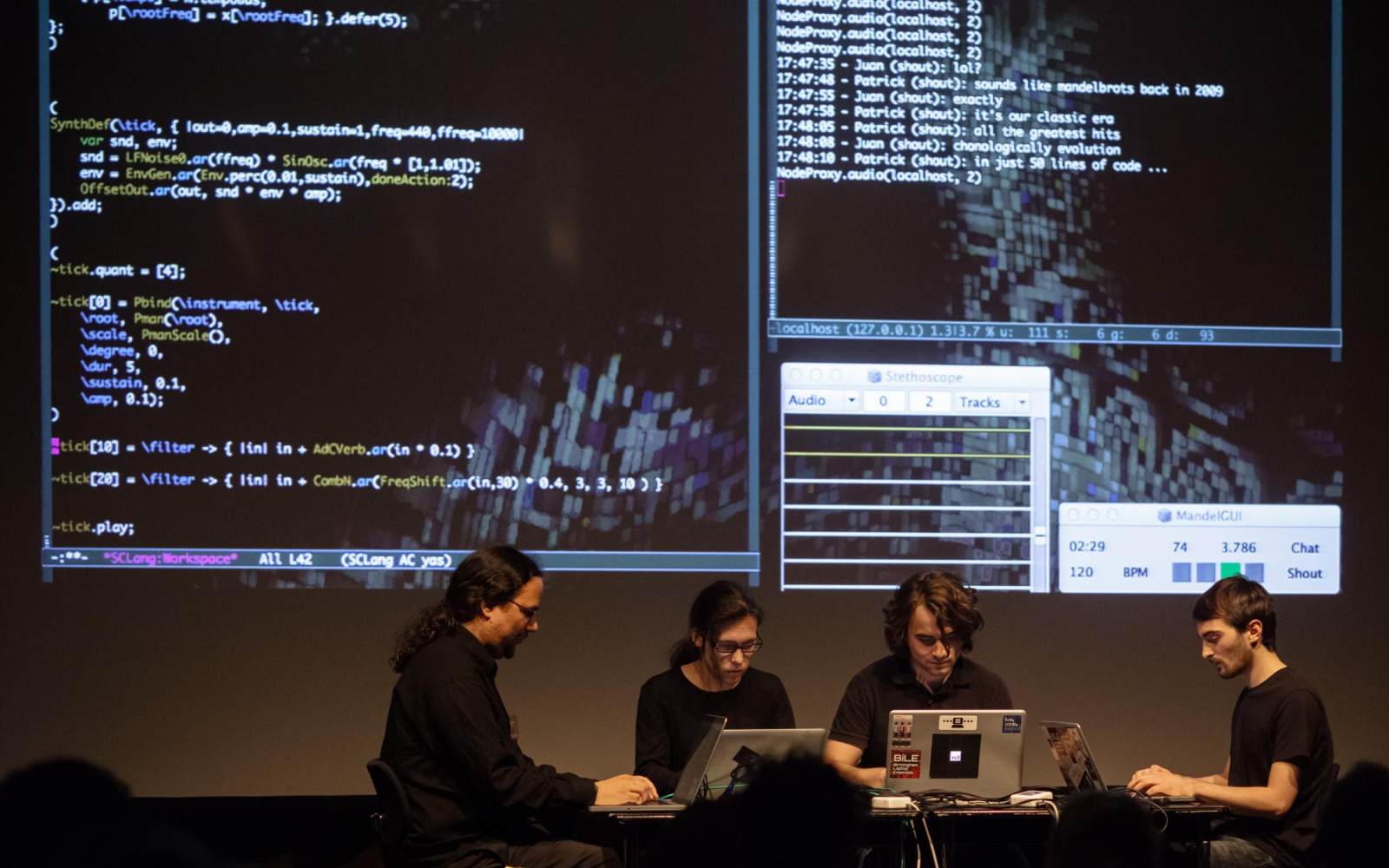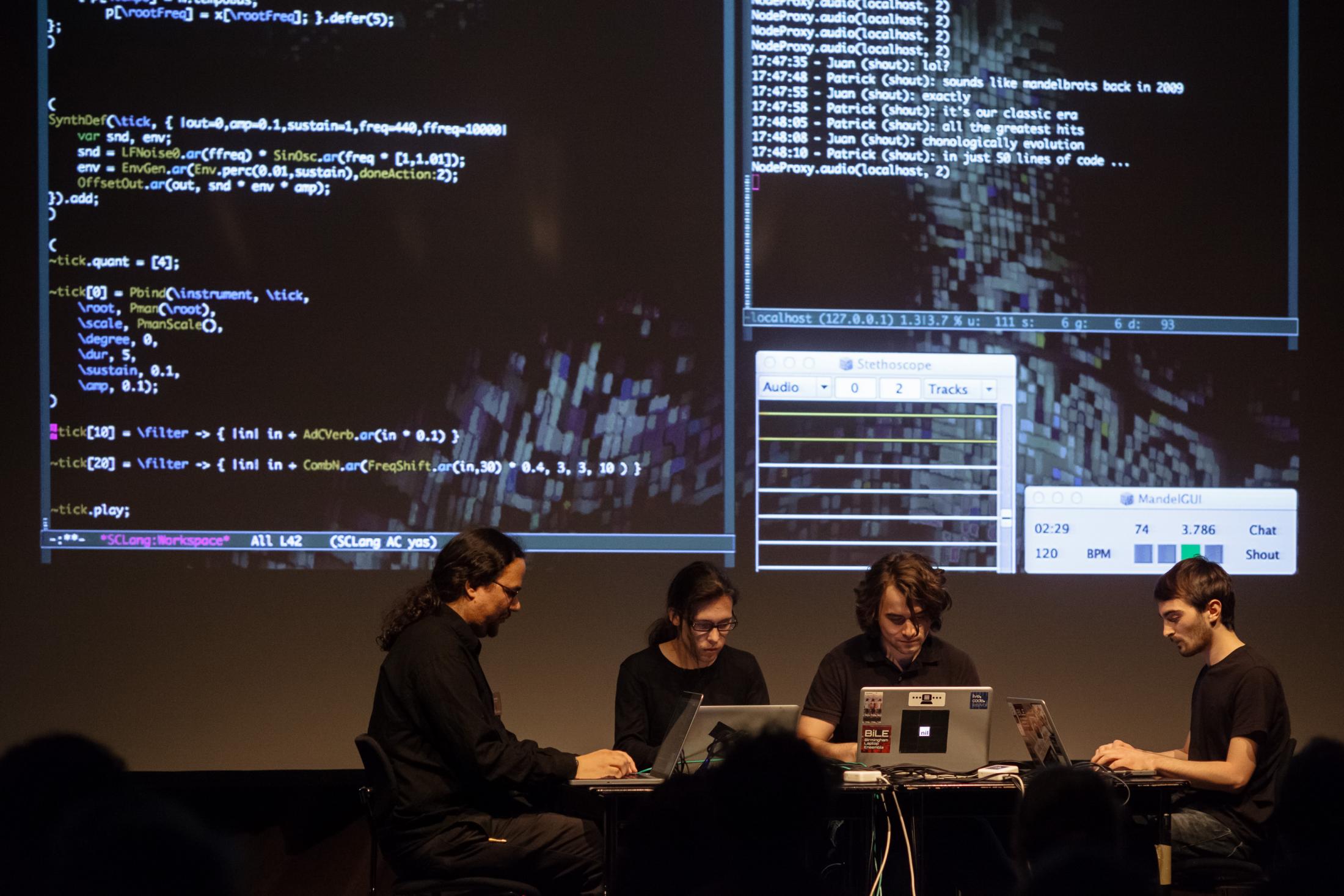Notation. Prozess. Musik.
2017
- Title
- Notation. Prozess. Musik.
- Year
- 2017
- Copy Number
- 006
- Medium / Material / Technic
- Video presentation
»Normally notes are points and lines on the two-dimensional surface of a piece of paper. The notation of the tone sequences is made up of signs on a surface. Nonetheless, these notes are interpreted as a temporal sequence, a chronological order. This is why music is considered the mother of all the time-based arts.«[1]
In an algorithmic composition, the composers do not directly write a musical score, but rather describe a process with an outcome that can be heard directly. A musical notation can also emerge as an intermediary step, which is in turn interpreted by musicians. The tonal result of an algorithmic composition can be identical every time or can be completely different each time if it is influenced by the artists’ chance decisions or interventions in the process it is running or by changing external factors. The music can also be stretched out temporally to become infinite through repetitions or jumps in the process description. The computer is the suitable instrument for implementing the algorithms. Understood as step-by-step instructions, however, the command sequences can also be handled by people much as cooking recipes are. Deft arrangement of the algorithms can enable highly complex tonal structures – which in many cases were never anticipated when the algorithmic compositions were conceived – to emerge through just a few instructions
This idea is systematically taken further in live coding, with the composition process appearing onstage in this case. The algorithms are written and performed live and with frequent improvisation in the form of programming source texts. Those who are programming live enter into a dialogue with the audience and also with the process that is underway. Live coding should be understood not as a musical genre, but rather as a musical performance practice. The programmers determine the musical result, which can touch on every possible genre, from abstract noise music to jazz to electronic dance music, which is currently enjoying great popularity through the label Algorave. The idea that underlies live coding, however, is not limited to the purely auditory – visuals are also a popular medium for live coding.
Through a multi-channel video presentation of »Notation. Prozess. Musik.« on two walls facing each other at the »Open Codes« exhibition, an arc is traced from traditional notation to algorithmic composition to processual live coding by four renowned artists. Exhibition visitors can also make their own first attempts at live coding at an interactive station.
[1] Peter Weibel, »Zellulare und molekulare Musik – Zur Kluft zwischen zwei Tönen,« in: Peter Weibel, »Enzyklopädie der Medien, Band 2, Musik und Medien«, University of Applied Arts Vienna, ZKM | Karlsruhe, Hatje Cantz, Berlin, 2016, p. 383.

